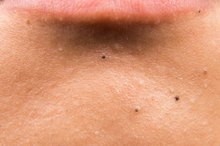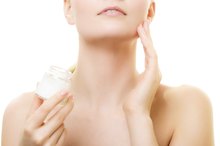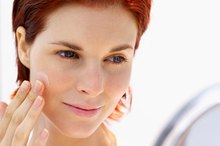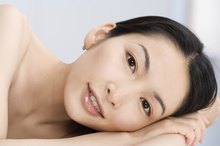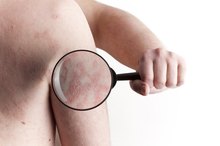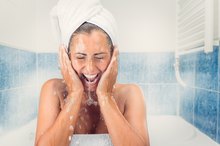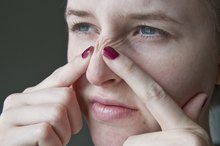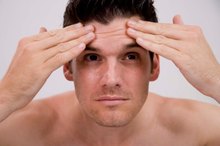How to Use Benzoyl Peroxide With Glycolic Acid
Benzoyl peroxide and glycolic acid are common treatments for acne 2. Benzyol peroxide oxygenates the skin and kills bacteria that live in pores and cause acne 2. Glycolic acid exfoliates skin, causing dead layers to slough off and revealing newer layers. Benzoyl peroxide does clear up acne in many cases, though evidence is limited that glycolic acid peels do the same. While you can develop a skin regimen that involves both chemicals, you should not use them simultaneously.
Get a glycolic acid chemical peel treatment. You can go to a spa or dermatologist to receive a professional-grade chemical peel or buy an over-the-counter kit to do it yourself. The glycolic acid in over-the-counter kits is significantly weaker.
How to Wash Your Face When You Take Accutane
Learn More
Wait three days after the chemical peel before using any skin-care products, such as benzoyl peroxide. Also, use sunscreen with a minimum SPF of 30 when outdoors during this time.
Wash your face on the morning of the fourth day with an oil-free acne wash. Let your face dry completely.
How to Reduce Black Spots on the Face
Learn More
Apply a small amount of benzoyl peroxide cream to your face. Avoid the skin around the eyes, as it is thin and might overreact to the benzoyl peroxide. Let the product dry completely; do not rinse it off.
Increase the amount of benzoyl peroxide solution or the percentage of the solution you use daily as you learn how well your skin tolerates the chemical. It often causes dryness and flaking; you can use an oil-free moisturizer to counteract this.
Stop using benzoyl peroxide upon receiving your next glycolic acid treatment. Typically, the best results from glycolic acid peels are achieved after eight to 10 treatments approximately 10 to 14 days apart. Remember not to use benzoyl peroxide within three days of a glycolic acid peel.
Warnings
Before using a glycolic acid chemical peel or benzyol peroxide at home, place a small amount of each chemical on a tiny area of your skin. Monitor the skin for an adverse reaction that might indicate extreme sensitivity or an allergy. If no such reaction occurs, proceed with the treatments.
Related Articles
References
- National Guideline Clearinghouse: Acne Vulgaris
- Acne.org: Benzyol Peroxide Regimen
- Veraldi S, Brena M, Barbareschi M. Allergic contact dermatitis caused by topical antiacne drugs. Expert Review of Clinical Pharmacology. 2015;8(4):377-81. doi:10.1586/17512433.2015.1046839
- Baldwin HE. Pharmacologic treatment options in mild, moderate, and severe acne vulgaris. Seminars in Cutaneous Medicine and Surgery. 2015 Sep;34(5S): S82-S85.
- Kim C, Craiglow BG, Watsky KL, Antaya RJ. Allergic contact dermatitis to benzoyl peroxide resembling impetigo. Pediatric Dermatology. 2015 Jul-Aug;32(4):e161-2. doi: 10.1111/pde.12585
- Mohammad TF, Burkart CG. Acne therapeutics: a closer look at benzoyl peroxide. Skinmed. 2015 Mar-Apr;13(2):94-6.
Writer Bio
Timothy Banas has a master's degree in biophysics and was a high school science teacher in Chicago for seven years. He has since been working as a trading systems analyst, standardized test item developer, and freelance writer. As a freelancer, he has written articles on everything from personal finances to computer technology.

